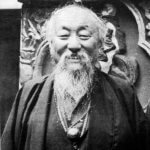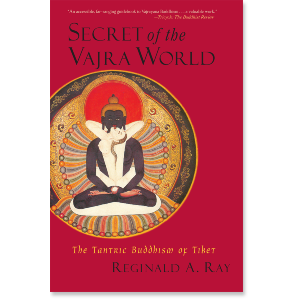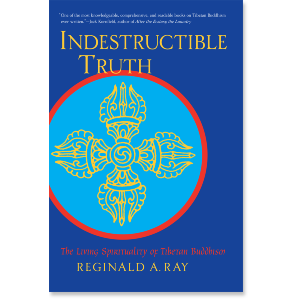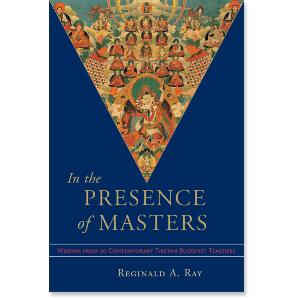| The following article is from the Autumn, 1994 issue of the Snow Lion Newsletter and is for historical reference only. You can see this in context of the original newsletter here. |
by Lisa Leghorn
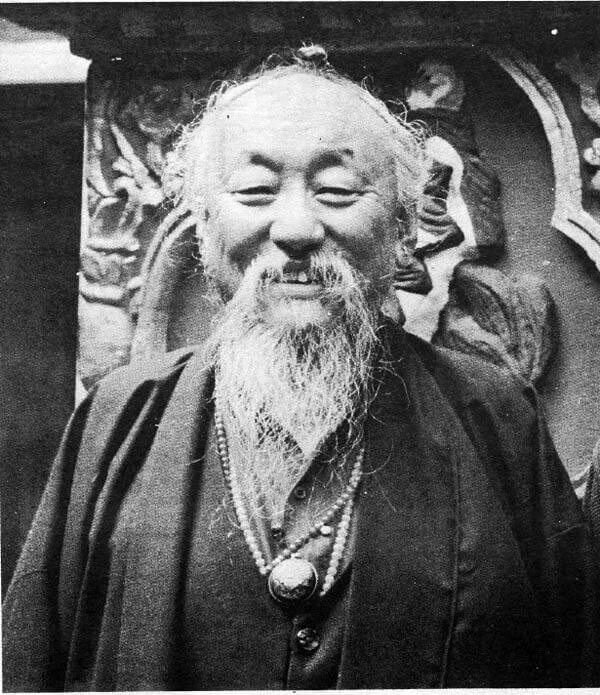
America, came the reply. Later, when he asked fellow refugees at the Tibetan refugee camp in India about America, most people didn't know where it was. Finally someone said, It's veiy far away and it's a land of blue-eyed demons. It was the year 1959.
His Eminence Chagdud Tulku Rinpoche did not go to the United States until October, 1979, and then, to teach. Invited by his wife, Jane Tromge, and several other Americans, he taught first in California and then in Oregon, where he was requested by a small but earnest group of students to stay. He agreed to do so only if the students would diligently apply what he taught them, which they promised to do. Both he and his students have remained true to their words. Over the past fifteen years, he has slowly and methodically unveiled the entire spectrum of Vajrayana teachings, including the pinnacle teachings of Dzogchen, the Great Perfection.
His commitment to fully establish the Vajrayana tradition in the West has involved three primary areas of activity: the development of twenty-one Chagdud Gonpa Foundation centers in the United States, Canada, Switzerland and Brazil where the teachings of the Buddhadharma can be learned, practiced and maintained; the translation and publication of classic texts, commentaries and liturgies as well as his own teachings, through Chagdud Gonpa's Padma Publishing; and teaching and training his ever-growing body of students.
Chagdud Rinpoche was born in Eastern Tibet in 1930, the son of Dawa Drolma, one of the re-nowned female lamas of that time. She was a famous delog, one who had died, traveled throughout the realms of samsara and the pure realms and returned to life; in her case, five days later. She brought messages back to the living from deceased relatives she had encountered in other realmsmessages so intimate that her identity could not be doubted, inspiring great faith in her. Her account of this experience, Delog: Journey to Realms Beyond Death, will be published by Padma Publishing in December.
Recognized at the age of two as the tulku of the abbot of Chagdud Gonpa in the Nyarong area of Eastern Tibet, the sixteenth in a line of great incarnate Indian and Tibetan dharma holders, teachers and treasure discoverers, Chagdud Rinpoche enjoyed a close connection with all four lineages of Vajrayana Buddhism. His father and stepfather were Gelugpa lamas, his mother's family lineage was Sakya and his own extensive training took place in both the Kagyu and Nyingma traditions. He completed two three-year retreats and studied with more than forty lamas, including some of the greatest masters of that timeSechen Kongtrul, Khanpo Dorje, Tblku Arig, Tromge TVungpa, His Holiness Du^jom Rinpoche and His Holiness Dilgo Khyentse Rinpoche.
After fleeing the Chinese occupation of Tibet in 1959, Chagdud Rinpoche lived for twenty years in India and Nepal, serving the Tibetan refugee community as lama, physician and artist. His Western students know little of those years, despite his autobiography, Lord of the Dance, which he wrote in response to repeated requests from his students. As Ken Wilbur noted in the foreword, He did not emphasize the achievements that have so defined his experience, but mostly his human foibles and his mistakes, using these to make teaching points, essentially at his own expense. Anybody who knows Rinpoche will realize that he would write his story in no other way.
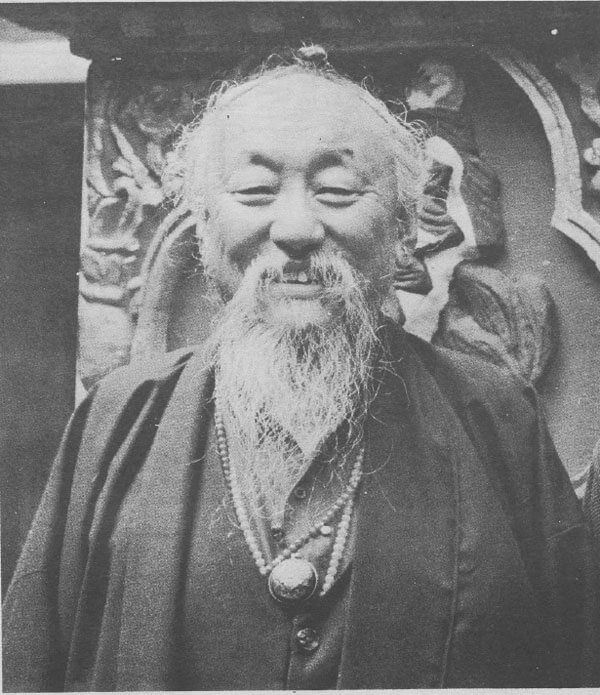
A lama currently in the United States has offered a glimpse of Chagdud Rinpoche's activity during those years. Lama Chodag Gyatso, former head of the Assembly of Tibetan Peoples' Deputies, a branch of the Parliament of the Tibetan Government-in-exile, now resides in the United States as one of the Chagdud Gonpa lamas. He sought out Chagdud Rinpoche :n 1969 after being told by his tutor, Sang-sang Lama Donyod Rinpoche, that he was a vast ocean of knowledge of the lineages, traditions and translations of the Nyingma, Kagyu and Sakya schools, that he held all the Kama and Terma traditions within the Nyingma school and that he was considered to be the accomplished living master of the Nyingt'hig lineage at that time.
He heard that Chagdud Rinpoche was in Orissa, India, a m^jor settlement of the Tibetan community-in-exile, where he was acting as representative of H.H. Dudjom Rinpoche, then head of the Nyingma lineage. According to Lama Gyatso, H.H. Dudjom Rinpoche had chosen Chagdud Rinpoche as his representative there because he felt that he was the most qualified to assume the m^jor responsibility of imparting all the oral transmissions, empowerments, and teachings to new practitioners as well as to advanced practitioners doing intensive Nyingma practice.
Chagdud Rinpoche's first center in Cottage Grove, Oregon began as a branch of H.H. Dudjom Rinpoche's Yeshe Nyingpo. In 1983, Chagdud Rinpoche established the Chagdud Gonpa foundation, whose main center moved to Rigdzin Ling in the Trinity Alps region of northern California in 1988. In addition to offering ongoing teachings and practice retreats by resident and visiting lamas, three annual drubchens are conducted there, intensive eight-day ceremonies that enable participants to swiftly accumulate merit and wisdom. The development to date includes a prayer wheel with close to one billion mantras, a larger-than-life-size Padmasambhava statue, and Tara House, which contains a large shrine room, commercial kitchen and guest housing, campground facilities and staff housing.
Chagdud Rinpoche has always emphasized the necessity of integrating view, meditation and activity and has established a work-study program in which students simultaneously develop the center and apply themselves in formal meditation and practice in daily life. Students at Rigdzin Ling also leam the V^jrayana ritual arts, including lama dancing. Those who have completed their preliminary practices (ngondro), join other students in a four-year program of Dzogchen instruction that takes place during a six-week retreat each year, now conducted by Chagdud Rinpoche and an American student, Wyn Fischel, appointed by Rinpoche to carry on some of his duties as head lama of Chagdud Gonpa.
In addition to offering all levels of instruction and placing a number of students in longer individual retreats of three or more years, Chagdud Rinpoche has also assumed responsibility for the training of the next generationthe spiritual education of young American tulkus growing up in the Chagdud Gonpa sangha. In 1993, Chagdud Rinpoche enthroned Wyatt Arnold as Tulku Padma Gyurmed Palden, the incarnation of Lama Aka Nyima, attendant of the saintly Tblku Arig of Tromt'har of Eastern Tibet Lama Aka Nyima had been a diligent Dzogchen practitioner who spent most of his life engaged in intensive practice. A story is told of a conversation between teacher and student in which Lama Aka Nyima, pointing out the poor geomancy of a large rocky mountain, said to his teacher, Wouldn't that mountain look better over there? Perhaps I should move it
Thlku Arig replied, Don't waste your powers on something like that
During the summer of 1994, Chagdud Rinpoche enthroned two year old Tulku Orygen Jigmed Namgyal, recognized by His Holiness Penor Rinpoche and His Eminence Dzongsar Khyentse Rinpoche as the incarnation of Padgyal Lingpa, one of the twentieth century's great tertons, or treasure discoverers. Given the prophecy by Padmasambhava that Chagdud Rinpoche would be the chhodag, or custodian, of a terma (treasure) cycle revealed by Padgyal Lingpa, it was not surprising that Padgyal Lingpa would have incarnated in Chagdud Rinpoche's sangha Insight into the intimate connection between Chagdud Rinpoche and Tulku Oiygen Namgyal comes from a prophecy received by Rinpoche himself as he prayed for a sign concerning the identity of this remarkable child. The dharma protector Ekadzati told him in a vision that the child was the emanation of three of Padmasambhava's twenty-five closest disciples: the body emanation of Nub Sang-gyay Yeshe, whose twentieth-century incarnation was known as Padgyal Lingpa; the speech emanation of Gyalwa Chhog-yang, whose current emanations include Chagdud Rinpoche himself; and the mind emanation of King THsong Detsan.
A third tulku, Chagdud Rinpoche's grandson Orygan Tromge, child of Rinpoche's son Tilku Jigme and his American wife Rigdzin TVomge, has not yet been formally recognieetl, bift^as also begun his training under the care of his father and grandfather. In each case, deep bonds of affection unite these tulkus with Chagdud Rinpoche as he oversees their upbringing and education.
Chagdud Rinpoche's ability to flourish in the West is due not only to his scholarship, realization, great compassion and humor, but to the fact that he is a renaissance man. Artist, poet, master of the ritual arts and chanting, renowned for his extraordinary voice, he has created nine major works of art since coming to the West, his largest a twenty-two-foot-high cement Padmasambhava statue.
Above all, his ability to touch students' hearts arises from his immense compassion and equanimity which embrace all cultures and beings. These qualities have made it possible for him to find common bonds with all those he encounters.
His instructions are characterized by a firm insistence that the teachings be diligently applied. He ends Gates to Buddhist Practice with the following counsel:
People give many reasons for not doing spiritual practice. Some say they don't believe the teachings; others feel they're not ready or that they don't have the capability. But this is a mistake. Whether or not we believe in samsara, this is where we are. Whether or not we believe in karma, we're creating it Whether or not we believe in the poisons of the mi nd, they are there. What is the benefit of not believing in medicine? Whether we're ready to do practice or not, death and sickness won't wait Why not prepare? Why not develop the capacity to help ourselves and others? We're ready to drink poison, but not to take medicine.
Not meditating once we've received teachings is like shopping for all our favorite foods, arranging them beautifully in the kitchen, and then not eating. We'll starve to death. Meditating is like eating: our pantry is full and we partake of what we've gathered.
Instead of telling ourselves, 'I don't have time today, I'll meditate tomorrow. I don't have time this week, I'll do it next week. This is a busy year, I'll get around to it next year,' we need to feel an immediacy about doing practiceright now, not just today, not just this hour, but this very moment
Here is a teaching by Chagdud Tulku urging us all to be mindful of our dharma practice:
To my hosts of students linked to me by previous aspirations and by karma, I, the tulku named Chagdud, this affectionate old man, am inspired by my feelings of love for you to write down this message and send it to you on the steed of the air. Look upon it
Do you invoke the enlightened mindstreams of the rigdzins of the three lineageswith faith, respect and longing?
Do you realize the essence of this hard-won state of freedom and opportunity, like the. udumwara flower, through practice of the sacred dharma?
Do you cut through the bonds of your attachment and clinging to all the other impermanent and illusory acts of this life?
Since the results of your right and wrong actions are infallible, do you behave in accord with the moral choices of virtue and harm?
Since there is no opportunity for lasting happiness in the cycle of existence, does the sublime attitude of renunciation arise in your mindstream?
Since unless you hear teachings ignorance cannot be dispelled, do you light the lamp of the dharma again and again?
Since your mindstream will not be tamed solely by hearing teachings, do you cut through your idle speculation with inner contemplation?
So that you are not bound by the conceptual elaborations of hearing and contemplation, do you practice according to the key points of direct transmission instructions?
Since there is no other infallible refuge in the cycle of existence, do you place the three sublime sources of refuge on the crown of your head?
In order to be protected from the suffering in this cycle of existence, do you abandon harming others along with anything that, might lead to that?
Since there is no sentient being in the six realms who has not been your father or mother, do you meditate with equanimity upon the similarity and kindness of them all?
As you see these beings who have been your mothers experiencing the causes of suffering and their results, are you moved to compassion?
Moreover, when you see any happiness or virtue in another, do you meditate upon this while rejoicing from your heart?
Given that ephemeral happiness does not bring satisfaction, do you arouse the aspiration to bring about lasting happiness?
While always looking closely at your own mindstream, do you direct your body, speech and mind to the path of virtue?
With your gathered virtue and real or imagined wealth, do you make offerings to perfect the accumulation of merit?
In order to uproot the bonds of your grasping, do you make an offering and gift of your body to the four kinds of guests?
Since the fundamental nature of this offering and giving is free of elaboration, are you endowed with the view that is the accumulation of pristine awareness?
In order to cast off the heavy load of harmful actions, obscurations, faults and failings, do you confess with the four powers as your antidotes?
Viewing Vajrasattva, the union of intrinsic awareness and emptiness, as equal to your own true nature, do you dissolve your most subtle habitual patterns in basic space?
Are you aware that the most sublime, the most profound, of all spiritual paths is the swift path of guru yoga?
Have you heard that, rather than meditating on hundreds of thousands of deities for many aeons, it is better to meditate once on the lama?
Have you the certainty that the lama's attributescolors, implements, ornaments and garbare vividly and spontaneously apparent, brilliant and unmuddled?
Does the sunlight of your faith and samaya shine upon the snow mountain of the lama, who is the reservoir of the snow melt of blessings?
In order to purify the accumulated obscurations of body, speech and mind acting together, do you follow the profound path of receiving the four empowerments over and over?
In order for the blessings of the mind-to-mind lineage to enter your mindstream, do you blend the lamas mind with your own?
Have you met face to face with the ultimate lama, the union of intrinsic awareness and emptiness, as your own true nature, utterly effortless and spacious?
Do you perceive all the phenomena of postmeditationappearance, sounds and thoughts to be the enlightened form, speech and mind of the lama?
Do you understand that, although all phenomena of samsara and nirvana are not your own mind, they do not exist apart from your mind?
In order to cut through the web of many concepts, have you gone through the preliminary of demolishing the hut of ordinary mind?
In pursuing the main practice of encountering the true nature of intrinsic awareness face to face, do you settle effortlessly, spaciously, utterly without contrivance?
Without deliberately meditating, yet without distraction, are you familiar with the most majestic and sublime kind of mindfulness?
Although your view may be as lofty as the sky itself, do you take care to observe moral choices scrupulously in your conduct?
As for the goal, atemporally and spontaneously accomplished, have you cut through the bonds of expectation, of hope and fear?
Please examine closely to determine whether these thirty-seven key pointsapply directly to you at all times and in all ways.
If you feel you want to sit, hold to the citadel of primordial being; if you feel you want to go, follow the true path; if you feel you need to do something, bring about great benefit for beings.
For me, Chagdud, burdened with the weight of my years, this hard-wrought old body, this gnarled tree, weathers storms of unbalanced elements, yet I am not iryured.
Hordes of demons, an otherwise malevolent bunch, serve me with respect.
I have laid the ground for the teachings of the great secrets to develop in the future.
If I leave, I am content to be in the presence of my lama, Padma Jungnay; if I stay, I am content to nurture the love of a lama for his students.
Whatever I have done, I am happy, a yogin of illusion, who offers this to you in an expansive and cheerful frame of mind.
Please look upon this with delight May it be stamped indelibly in your minds!
For more information about Chagdud Rinpoche's programs, contact: Chagdud Gonpa, PO Box 279, Junction City, CA 96048, 916-623-2714.

